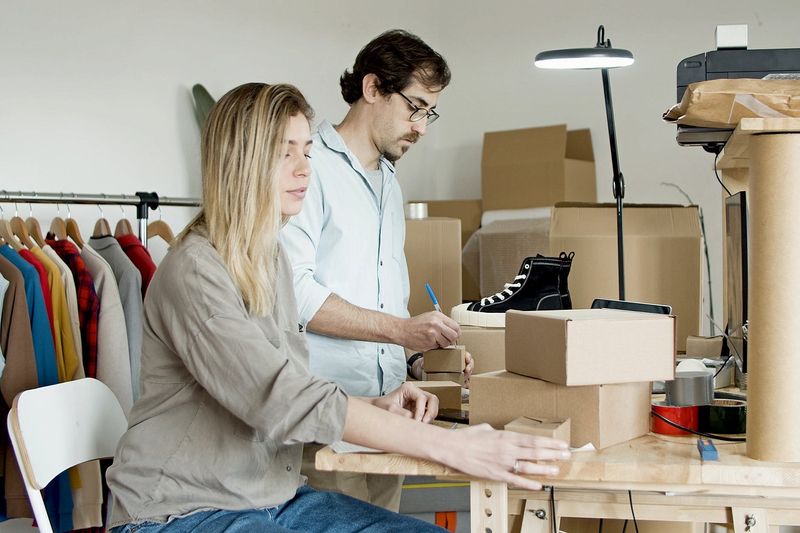[ad_1]
The UAE’s industrial and logistics (I&L) sector is in the spotlight, and for good reason. Given recent government initiatives, and changes in demand in the sector, coupled with a lack of new high-quality stock, CBRE sees an opportunity for start-up developer investors.
With e-commerce, cloud kitchens, 24x7x365 delivery, and increased rents, the logistics market should grow from strength to strength. Lifting restrictions on activities requiring joint venture partners is attracting new entrants. But we haven’t seen the market move in the way we expect.
While delivery services have become an increasingly important part of our lives, there’s no question that the level of newfound convenience has stagnated. Consumers expect products to be available throughout the UAE and demand shorter delivery times.
To cater for this, we are seeing a rapid expansion of the market for short-term delivery services. A host of new e-retail, grocery and food delivery apps have emerged, targeting increasingly shorter delivery times and new types of demand. This, coupled with the already heightened level of demand for traditional warehouse space, coupled with the lack of availability, has led to frustration among occupiers, both existing and new entrants.
We have seen the UAE put more emphasis on domestic industry and manufacturing. By 2031, under the “Action 300 billion”, the UAE aims to increase the contribution of its industrial sector to GDP from AED 133 billion to AED 300 billion.

Whether it’s e-commerce, cloud kitchens, logistics or industrial customers, demand for warehouses will continue to be met.
limited stock
Current stock cannot meet the current and future anticipated nature of occupant needs. The market is characterized by a large number of old and remote manufacturing and trading warehouses, the supply of modern logistics storage accounts for a small proportion of the total stock, and there are very few vacant stocks.
Where available, modern logistics warehousing tends to be located in free zone locations close to ports/airports, although this is typical for more traditional logistics operations there, it is not suitable for the fast growing last mile logistics market, to give an example .
In other cities across the globe, logistics parks in urban areas have been developed to meet the last-mile delivery needs of occupants. But developing such assets in the UAE is much more difficult. Most of the major greenfield sites in the UAE are zoned for commercial/residential use, with book values significantly higher than what an industrial or logistics operator could reasonably achieve with a FAR above 1:2.
The UAE industrial market has also historically been dominated by owner-occupied warehouses, with limited speculative development by investors. Where ‘build-to-demand’ (BTS) or speculative developments have emerged, they have mainly come from owner developers, aiming to kick-start activity within their respective industrial estates. These have been and continue to be a great success.
Compared with free zone locations, the onshore non-free zone market is underdeveloped. Free zone authorities often provide easier access for end users through affordable land leases. However, the limited availability of onshore non-free zone land has resulted in insufficient supply when it is most needed.
CBRE clients are looking for underground car park space to operate and in other markets we are considering all suitable properties – including residential villas and vacant retail units.
There is no doubt that as the UAE’s industrial and logistics markets continue to mature, we expect underlying supply and demand indicators to point to significant and relatively untapped development opportunities in the Grade A market, rising as tenants review stock – the latest health and life safety measures , increased circulation and parking spaces, and significantly improved efficiency compared to the current premises. An increase in rent may offset these attributes.
Tailored?
We are seeing developers delaying the development of potential plots in the hope of securing BTS agreements with end users to minimize risk and maximize returns. BTS agreements are based on the specific requirements of the occupiers, and the final product is often more specialized.
While this does impose costs on developers, they typically secure above-market rents, 10-year leases with limited rent-free periods and agreed fixed rent increases throughout the lease term. However, the frequency of these demands combined with the number of existing developers resulted in stiff competition when BTS entered the market.
CBRE believes the market is pointing towards a speculative development. If the developer proceeds, knowing that the final design will be more versatile than a BTS warehouse, we see developers facing open market rents, tenant incentives (such as rent-free), rental vacancy and marketing periods, and once a project is under construction, identifying new The possible contractual strength of tenants is offset by the realities of the market.
In many cases, we have seen the speculative development of free zone authorities leasing during construction, which means that the return has increased compared to the project cash flow.
We agree that for risk-averse developers, sticking with BTS transactions is the safe bet. Unfortunately, despite the high demand, BTS transactions are infrequent in the market, and only a few international clients participate in these discussions. We envision well-located, well-designed and arranged, market-priced speculative development leases during construction.
Interestingly for existing developers and landlords, the lack of high standards of speculative development is also holding back rents as we don’t see new market rent deals setting new benchmarks for the market, resulting in B and C grades Rents for high-grade properties have risen.
investment appetite
With the UAE remaining “open for business” during the pandemic, local and international investors and funds have focused on the I&L sector across the region as a market worth investing in. This has led some international hedge funds to open new offices in Dubai, with plans to deploy capital in the region.
Meanwhile, the I&L asset class has attracted the attention of local funds and investors interested in diversifying their portfolios amid uncertainty in other sectors.
Recent trading evidence suggests that yields on income-generating assets in the UAE have contracted to around 8% to 9% over the past 24 months, compared to closer to 5% to 6% for major global industries The market continues to mature.
CBRE hopes to see open market sales of new high-quality I&L properties in onshore non-free zone locations for a true test of market yields.
formula for success
Global economic headwinds do not appear to be doing much to dampen occupier demand, meaning developers have immediate access to unencumbered land, they have cash reserves or access to financing, and they can benefit from a market looking for inventory but not being able to find it.
The recipe for success is likely to be a joint venture between an experienced international developer and a partner with prime industrial land. The first-mover advantage will be critical, and we expect planning for some of these programs is already underway. Market competition may have already begun.
After all, if you don’t build it, how are they going to come?
[ad_2]
Source link

